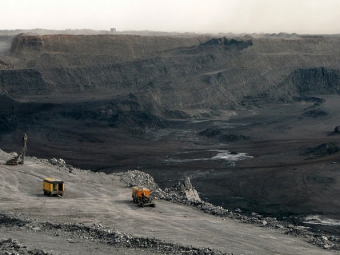160-YEAR STUDY OF REAL COMMODITY PRICES SEES BEGINNING OF THE END OF THE SUPERCYCLE
David Jacks from Simon Fraser University in Vancouver and the Massachusetts-based National Bureau of Economic Research has a new paper out called From Boom to Bust which looks at real commodity prices on a very long time horizon.
The paper considers the evidence on real commodity prices over 160 years for 30 commodities representing $7.89 trillion worth of production in 2011.
The study finds that both energy and non-energy commodities have been on the rise – albeit modestly in many instances – from at least 1950 in real terms.
Applying weights drawn from the value of production in 2011 real commodity prices have increased by 252.41% from 1900, 191.77% from 1950, and 46.23% from 1975.
This suggest “the conventional wisdom on long-run trends in real commodity prices may be unduly ‘pessimistic’about their prospects for future appreciation or unduly swayed by events either in the very distant or very recent past.”
That’s the long term good news.
In the short and medium term things are less rosy.
Jacks’ research suggests that apart from these long term trends commodity prices are subject to medium-run or super-cycles that span from 10 – 35 year and short-term boom and bust episodes.
The study says these boom and bust episodes which tend to lower economic growth are historically pervasive and have become more intense over time as anyone who’s been following the mining and metals industries for the last few years can attest to.
Inasmuch as it is possible to have a certainty in economic predictions, increasing volatility in the future is probably it, the study suggests.
Medium term trends or supercycles happen in response to periods of rapid industrialization and growth which bring with it rising demand and supply constraints – most vividly illustrated by China’s recent past.
Jacks identifies three earlier supercycles: one occurred from 1890, peaking around 1910 and ending in the 1930s; one than that peaked in the 1950s and another that reached a high point in 1970s that had fizzled out by the 1990s.
The current supercycle starting in the late 1990s is a slightly special case as “much of the recent appreciation of real commodity prices simply represents a recovery from their multi-year — and in some instances, multi-decade — nadir around the year 2000,” Jacks finds.
Here’s the bad news however: the “latest set of super-cycles are likely at their peak” and “nearing the beginning of the end of above-trend real commodity prices.”
Frik Els | March 15, 2013
The paper considers the evidence on real commodity prices over 160 years for 30 commodities representing $7.89 trillion worth of production in 2011.
The study finds that both energy and non-energy commodities have been on the rise – albeit modestly in many instances – from at least 1950 in real terms.
Applying weights drawn from the value of production in 2011 real commodity prices have increased by 252.41% from 1900, 191.77% from 1950, and 46.23% from 1975.
This suggest “the conventional wisdom on long-run trends in real commodity prices may be unduly ‘pessimistic’about their prospects for future appreciation or unduly swayed by events either in the very distant or very recent past.”
That’s the long term good news.
In the short and medium term things are less rosy.
Jacks’ research suggests that apart from these long term trends commodity prices are subject to medium-run or super-cycles that span from 10 – 35 year and short-term boom and bust episodes.
The study says these boom and bust episodes which tend to lower economic growth are historically pervasive and have become more intense over time as anyone who’s been following the mining and metals industries for the last few years can attest to.
Inasmuch as it is possible to have a certainty in economic predictions, increasing volatility in the future is probably it, the study suggests.
Medium term trends or supercycles happen in response to periods of rapid industrialization and growth which bring with it rising demand and supply constraints – most vividly illustrated by China’s recent past.
Jacks identifies three earlier supercycles: one occurred from 1890, peaking around 1910 and ending in the 1930s; one than that peaked in the 1950s and another that reached a high point in 1970s that had fizzled out by the 1990s.
The current supercycle starting in the late 1990s is a slightly special case as “much of the recent appreciation of real commodity prices simply represents a recovery from their multi-year — and in some instances, multi-decade — nadir around the year 2000,” Jacks finds.
Here’s the bad news however: the “latest set of super-cycles are likely at their peak” and “nearing the beginning of the end of above-trend real commodity prices.”
Frik Els | March 15, 2013

Comments
Post a Comment